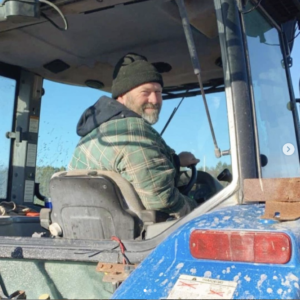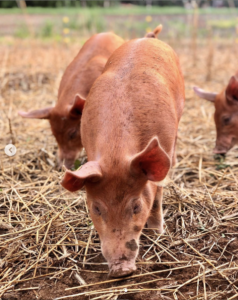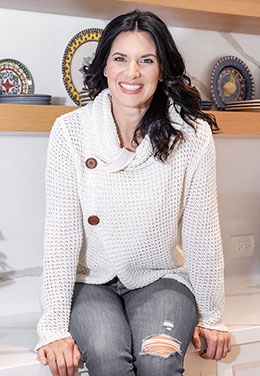Have you ever wondered what it takes to convert a conventional farm to an organic farm? Maybe you’re not even sure what the difference is.
Let me break it down for you and share one farmer’s journey towards a healthy, organic, and regenerative farming system.
WHAT IS CONVENTIONAL FARMING?
Conventional farming, also known as intensive or industrial agriculture, relies on pesticides and herbicides to manage pests and weeds and uses a chemical-based fertilizer as the plant’s food.
Synthetic chemicals and GMOs are the primary “inputs” used. Farmers must pre-invest in these products before the season begins, sometimes putting a financial burden on a farmer before knowing what the yield or profit will be for that season.
An energy-intensive process is required to make synthetic nitrogen fertilizer. Excess nitrogen (N2O) pollutes our drinking water and is 300 times more potent than carbon dioxide (CO2) as a greenhouse gas.
Heavy machinery and tilling of the land often leave the soil compacted and, eventually, void of life. The fertilized soil can become overloaded with chemical toxins and low in nutrients, and the use of water and energy becomes high.
It accounts for about 10-12% of fossil fuels contributing to environmental pollution and lower nutrient-dense food.
WHAT IS ORGANIC & REGENERATIVE FARMING?
Organic and regenerative farming relies on natural principles like biodiversity and composting to produce food and minimal inputs.
Other methods like no-till, crop rotations, and the use of composted animal manures and green manure crops, in economically sustainable ways, are also used, keeping the soil, crops, animals, and farmers healthier.
Natural processes from specific plants grown the year before supply nitrogen to crops, helping fight global warming.
Food is more nutrient-dense, providing more vitamins and minerals.
Other benefits of organic and regenerative farming* are:
- It produces three to six times more profit for US farmers and two times more for Canadian farmers
- During times of drought, organic farming has 40% more yield than conventional farming
- No chemical toxins leech into our waterways
- It uses 45% less energy
- Releases 40% fewer carbon emissions
*Sourced from The Rodale Institute
In Canada, farmers who want to label their food as organic must go through a certification process, which involves inspections of their farms and practices.
ONE FARMER’S JOURNEY

Meet André Houle – no direct relation to me, I asked. 😉 He is the third-generation owner and farmer of Ferme Houle Farm in Curran, Ontario, Canada. He spent the last three years converting his conventional farm to Certified Organic and Regenerative.
He spent thirty years before converting his farm growing soy and corn conventionally. When I spoke to André about his reasons for transitioning his farm to organic regenerative, he explained that after years of farming with conventional methods of chemical-based inputs, he lost money and had less yield, not more.
He described how if he kept it up, he would have no retirement plan, would have to sell, and wouldn’t be able to pass the farm on to his kids.
He explained that while he and his father were farming, they asked each other daily, “What are we going to kill today?”
Whether it was pests or weeds, each day brought on frustrations of fighting nature rather than working with nature. After thirty years of farming the conventional way, their soil was almost entirely void of life.
That got André thinking; there must be a better way.
Through a lot of internet searching, André learned about Gabe Brown’s farm, a 5,000-acre farm in North Dakota that focuses on farming nature’s way without synthetic fertilizers, pesticides, and fungicides.
He also used resources like the Rodale Institute and Canadian Organic Growers. They created the group Growing Eastern Ontario Organically (GEO-O), which offers farmers business mentoring and workshops to help them convert.
André says the most critical pay-off after all these years is that they are growing the best, most nutritious food in a way that helps our environment, and this is the type of legacy that he wants to leave for his children.
WHAT CHANGED ON HIS FARM?

About a century ago, the Houle farm had mixed dairy and potatoes but transitioned about thirty years ago to a cash crop operation growing corn, soy, buckwheat, wheat, and rye.
In 2018, they decided to use regenerative agricultural practices, working towards organic certification.
It takes a conventional farm an average of five years before the soil “weans” itself from the chemicals used, and during the first three years, yields will drop to about half. Hence, farmers need patience and perseverance with a genuine commitment to regenerative when making the switch.
Crop rotation is planned years in advance to break up weed cycles and a combination of crop rotation and cover cropping to attract more beneficial insects that control pests, rather than the heavy use of pesticides that kill ALL insects, leaving no predators to control the pest population.
The soil stays healthy with the use of animals for their compostable manure, and they include hogs, chickens, and turkeys that roam freely on pasture.
The most exciting thing for the Houle farm now is that they are working hard to become carbon negative, eliminating greenhouse gases from their operation completely.
What exactly does this mean? André explained it to me this way; take at a conventional slice of bacon, for example.
- Sows are bred in tight, highly populated cement floor pens, even during their gestation period.
- They give birth in a cage where they can’t turn around, and they are stuck in that cage for at least one month until the piglets are removed.
- The piglets are shipped to another facility to be raised (CO2). The sows are immediately returned to the breeding area to start over.
- The piglets are moved again to a finishing facility (CO2) after approximately one month.
- The grown pigs are then shipped to a company-owned abattoir, sometimes hundreds of km away (CO2).
- Because the pigs are confined to cement floors, they are prone to disease. So, they are treated with antibiotics.
- Their feed consists mainly of soybeans and corn. To grow conventional corn there is heavy use of nitrogen fertilizer and the process is energy-intensive to produce (CO2). It contributes to global warming due to its nitrous oxide (N2O), almost 300x worse than CO2, polluting our water and damaging our ozone layer.
- Corn is harvested and dried (CO2 from the propane burnt to dry the corn).
- Corn is trucked to the feed mill to be converted into feed (CO2).
- The feed is trucked to the facility to feed the pigs (CO2).
- The intensive livestock operation produces a lot of liquid manure spread on the field (CO2).
The Houle farm regenerative slice of bacon:
- The sows are bred whenever the boar and sow decide it’s right.
- They are fed organic grains grown and milled on the farm.
- Every pig is kept on pasture for as long as possible. They live in a large barn area for the winter, and the pregnant sows are moved to their own pen when they are close to birthing. They enjoy a full pen where they can roam.
- When the piglets are removed, they join the rest of the group, and the sow is allowed to rest for a couple of weeks before she eventually joins the group and nature takes its course.
- The pigs live happily together and are sent to a local slaughterhouse (low km trip to lessen stress levels).
No harmful chemicals are used, and no CO2 is produced from moving animals or grains.
No need to spread the manure since the animals do it for us.
A HAPPY ENDING
The good news is that within three years, André has seen a significant change in the soil health of his farm. He says the worms are back and that there are species of butterflies returning that he hasn’t seen since he was a child on the farm, and in August, the Houle farm received the exciting news that they were finally certified!
Best of all, he and his family love farming again and are excited for the future of Houle Farm.
If you’re looking to stock up on quality meat and vegetables, and you’re in the Ottawa area, stop by the Houle farm.
André and I may not be directly related, but I am proud to share the Houle name with a family that shares the same values I do about food and the environment.
Check out their farm at https://fermehoulefarm.com/home
If you’re in Canada and are looking for a similar farm in your area, see the link below
https://regenerationcanada.org/en/map/
Or use the Regenerative Farmers of America if you’re in the US.


